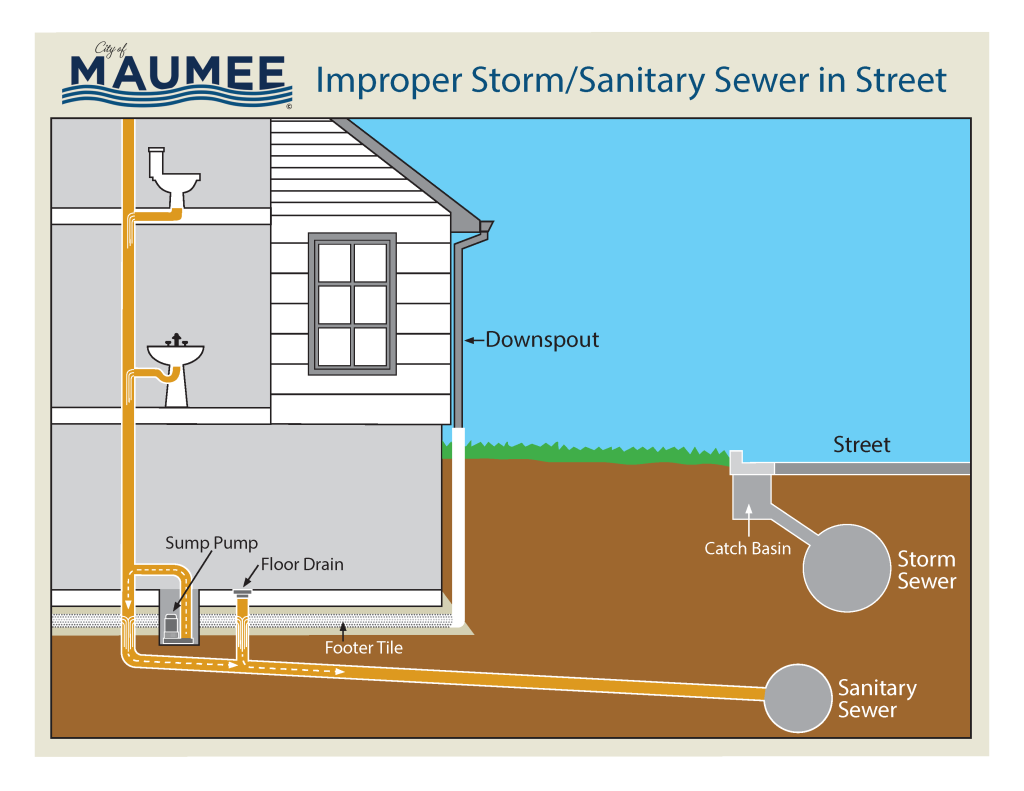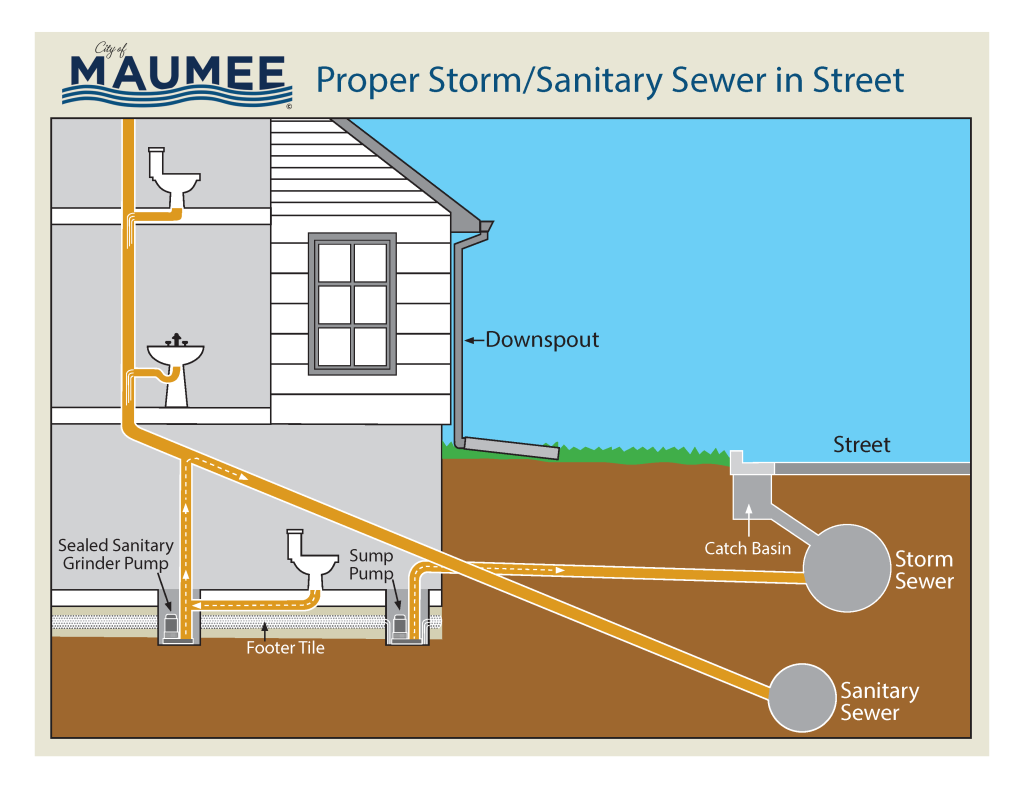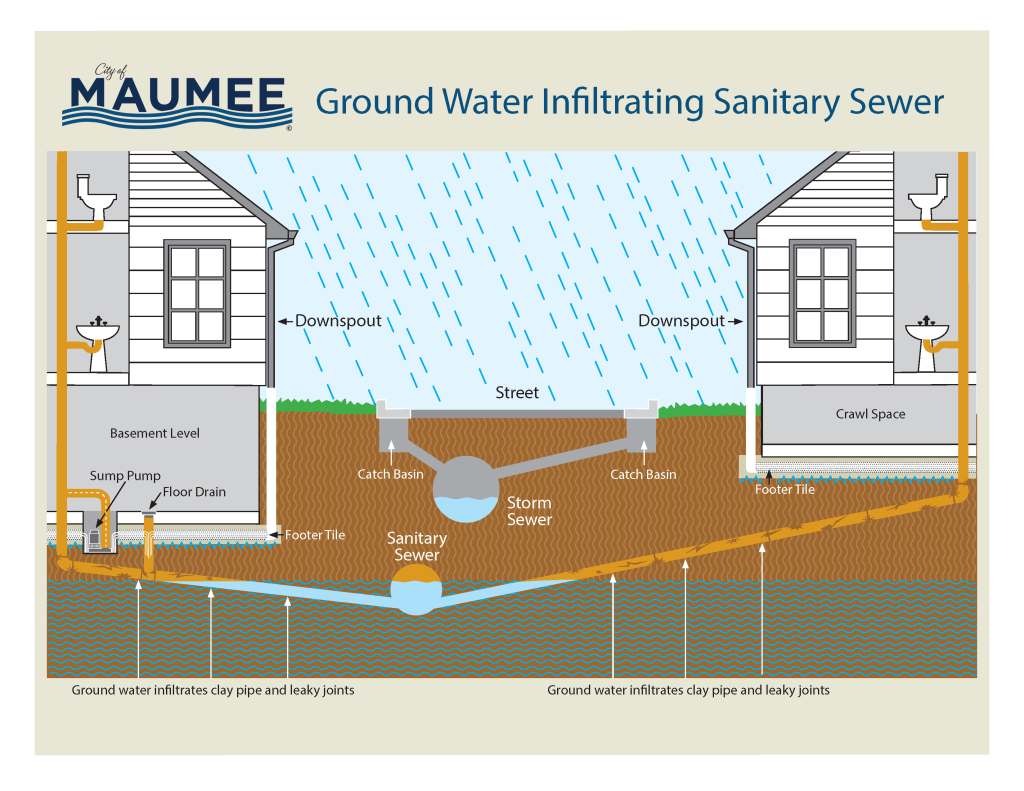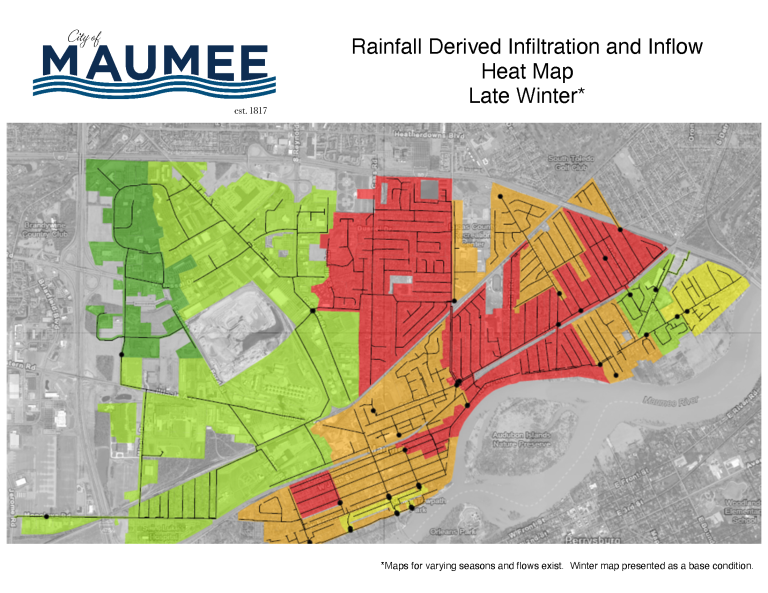Sanitary Sewer Separation Project
Historical Perspective: Although the City did separate sanitary and storm sewers in the 80’s and 90’s, it failed to eliminate regulators that continually served as a connection between the storm and sanitary sewers. The City also failed to fully recognize the true impact of private property footer drains and leaking clay sanitary sewer leads that connect to the City’s sanitary sewer mains.
As a result, multiple pumps were used to manage the situation by dumping raw sewage into the City’s stormwater system. City staff also manually discharged sewage directly from the Birch Street pump station into the river. Furthermore, City staff failed to report the illegal actions and actively authored multiple reports stating that few if any events had happened even though clear actions were taken to pump active sewage into the river for decades. However, that reporting never happened, and discharges continued without proper permits and reporting. These false actions were also reported to the EPA in July 2020.
As a result of self-reporting the violation, the state issued a “Director’s Findings and Orders” requiring the City of Maumee to stop illegally discharging sewage into the Maumee River. It also stipulates and requires massive testing and study of the problem.
In December 2021, the City of Maumee approved a nearly $900,000 contract Stantec, a global engineering firm specializing in consulting and engineering services, to study the city’s sewer system. Immediate work also began to repair, reline, and replace sewer lines on streets and alleys and, several catch basins in commercial parking lots that were incorrectly tied to the sanitary system were corrected.
Mandates by the EPA have also required the following action:
1. Sewer Evaluation Study: Specifies major tasks associated with further authoring a Sewer System Evaluation Study (“SSES”)
2. Public Notification Plan: Inform the public of all sanitary overflow locations, signs, postings, and inserts as applicable. This plan remains ongoing.
3. Emergency Response Plan: Develop procedures for emergency response to surcharge events.
4. Capacity, Management, Operation, and Maintenance Program: Mitigate and stop sanitary overflows as soon as possible for all parts of the sanitary collection system. This program remains ongoing.
5. Sewer System Evaluation Study (“SSES”): Identify sources and quantities of clear water infiltration and inflow (“I & I”) entering the sanitary sewer system and identifies all feasible, cost-effective actions needed to eliminate or minimize excessive I&I entering the sanitary sewer system that causes or contributes to sanitary sewer overflows (SSOs) and water in basements.
The 2024 SSES report has been uploaded to OEPA. You can view/download the file here:
City officials and the leadership team of the Citizens of Maumee Action Committee (CMAC) are collaborating to address the city’s sanitary sewer overflow remediation plan. This collaboration has led to the development of a comprehensive plan to address the sewer issue while minimizing the negative impact on residents.
The plan aims to eliminate sanitary sewer overflows (SSOs) more quickly, thereby avoiding the need to build costly sanitary sewer storage tanks that would ultimately raise long-term expenses for residents. Although the full proposal is still in the preliminary stages, we remain hopeful that once approved and implemented, it will effectively address the issue and allow our community to move forward.
The Proposal calls for the following:
• Lining the public sanitary sewer main and laterals in the Uptown district and the area around the Turnpike. Cost of the project is approximately $61.2 million, and bidding could happen as early as 2025.
• Lining the public sanitary sewer main and laterals in areas west of Key Street and north of the former St. Luke’s Hospital property. Cost of the project is approximately $20 million, and bidding could happen as early as 2030
The following portion of the proposal is contingent on legal analysis and appropriate state approval:
• Lining the laterals on private property within two to four feet of the house. Cost of the project is $20 million, and bidding could happen as early as 2025.
• Implement a grant/loan program to address illicit connections of footer drains, downspouts, and sump pumps in private homes. Cost of the project is approximately $20 million and funding for this work would come from an approximately $12 monthly fee paid by all users. This fee may be reduced or waived based on income.
The city nominated our community for $81.2 million in funds from the Ohio EPA for a water pollution control revolving low-interest loan to cover the sanitary sewer lining work. Much of the work would be completed in five to seven years of a projected second-quarter 2025 start date. The loan will be repaid out of the sewer fee over a period of 30 years or more.
These are the final ‘Findings and Orders” provided by the Ohio EPA.
Citizen Questions & Concerns:
We thank the citizens of Maumee who are engaged and asking questions by attending the city-hosted roundtable discussions, which began July 31 and will continue through August 29. Residents also attended meetings hosted by Maumee Council Member Phil Leinbach.
Hundreds have participated in these discussions and the input from attendees has been compiled and carefully reviewed.
To view citizen questions and answers click here:
To view the suggestions that citizens have brought forward to address the issue click here:
In this episode of the Strong Towns Podcast, Chuck Marohn addresses the issue facing Maumee as he explains the history of sewer infrastructure, how the Clean Water Act affects cities and the very limited options that cities have to handle this kind of challenge. He also points out that the Strongest Town Contest is about celebrating cities that are working hard to improve, rather than finding cities that are perfect. Just because Maumee is facing this challenge does not mean that it’s a failure — and it’s not alone in this struggle, either. All cities are either facing this challenge, too, or will be facing it in the near future. That’s the consequence of decades of unproductive growth.
Sewer Inspection Registration
Once you complete this registration, the City will reach out to schedule your sewer inspection.




